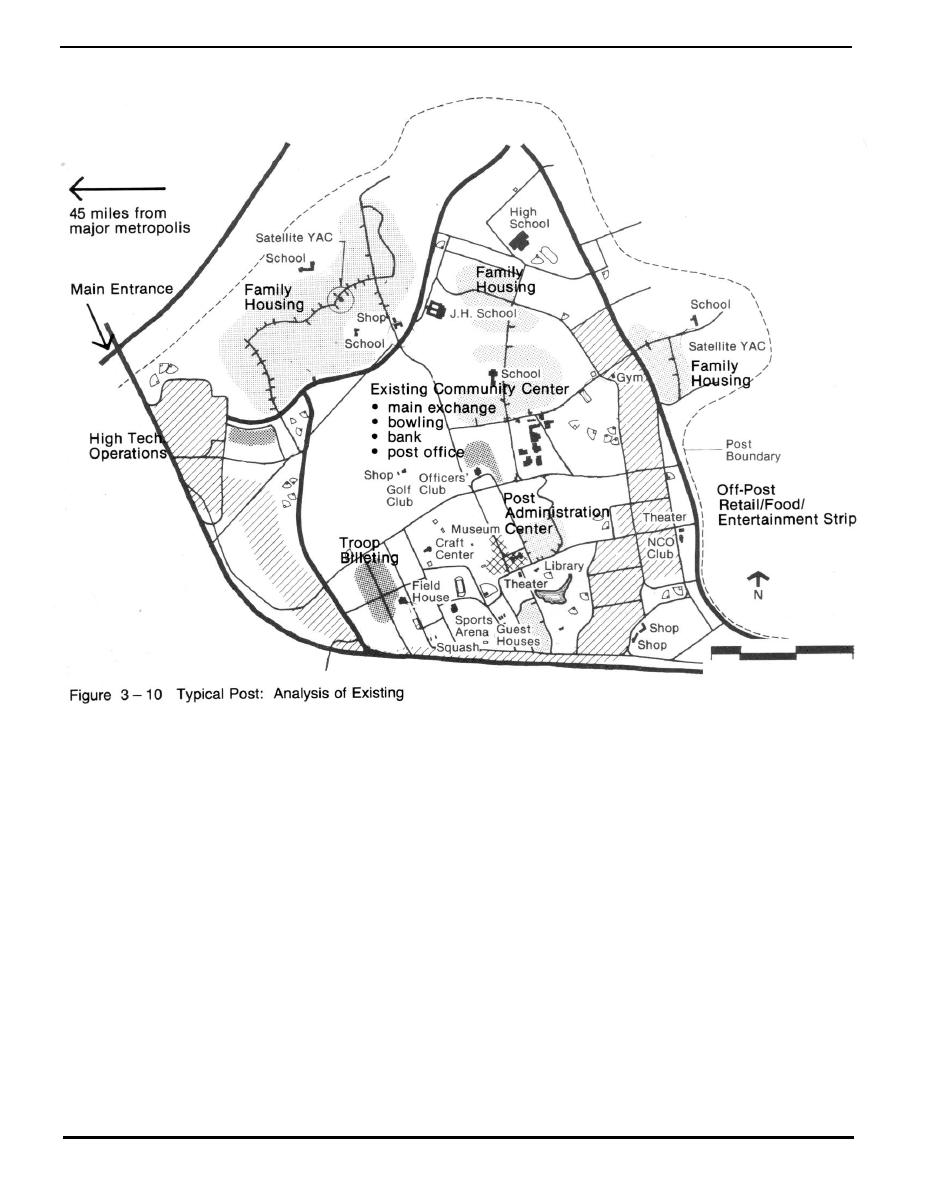
Chapter 3
a. Analysis of Existing
program staff through the committees outlined above.
Comparison with civilian life situations for similar popula-
Conditions
tion groups will help broaden the perspective. The result
should help define the full scope of activity goals and
service needs that community programs should try to
(1) Post Mission and Population. Determination, of
meet.
the post's community system needs, begins with an anal-
ysis of the post's mission and population. Consider the
current mission, projected changes, and the implications
(2) Post Land Use and Context. The next step is to
for service needs, such as-changes in numbers of troops
analyze the location of functions on the post, the local
or dependents, or addition of a highly technically-edu-
topography, and surrounding environment (see figure
cated population. Review the post population and its
3 - 10). Review the masterplan to understand the organ-
breakdown by user categories - military/dependent, rank,
ization of service areas and facilities on post: central
age, etc. For each group, analyze activity patterns, pref-
administration, post operations, specific mission-related
erences, and potential trends. Chart these for each user
activity concentrations, family housing, officers quarters,
category, including population numbers and activity
troop billeting, dining facilities, existing community ser-
preferences.
vices, road networks and transportation facilities, topo-
graphic features, etc. Analyze the rationale behind the
Activity preferences can be gleaned from biennial Post
relationships between community service facilities and
Information Surveys, general program usage literature,
the other elements on post. Also review intentions for
and existing activity utilization rates. Even more valuable
future building and post organization outlined in the
are preferences expressed by users and direct service
masterplan.
Page 3-12 DG 1110-3-142


 Previous Page
Previous Page
